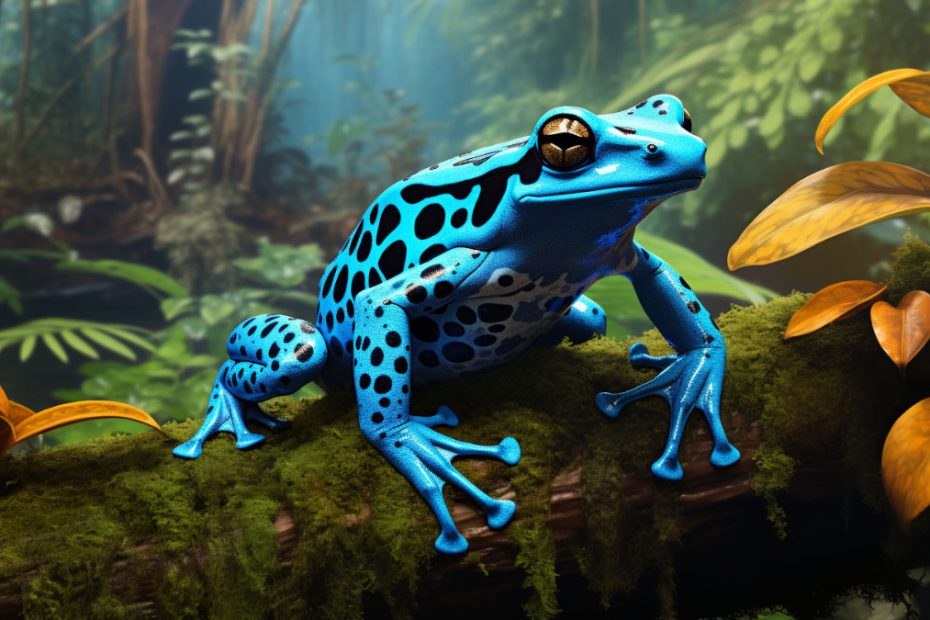Frogs established themselves as masterful survivors of the wild for millions of years. From the deep of the Amazon rainforest to the placid pond in your backyard, frogs employ intelligent strategies as defense mechanisms.
So, how do frogs protect themselves from predators? Frogs use tactics like camouflage, toxic skin secretions, high jumps, burrowing, coloration, puffing up their body, and often playing dead to survive against predators. Sometimes, they urinate to conceal their scent to avoid being detected.
Anyway, I will explore this topic in this article to the last detail for you. So, without further ado, let’s take the tour.
Frogs 10 Defence Strategy Against Predators
The Infamous amphibian frogs don’t fixate on a particular skill to withstand any predator. They have numerous ways to steer clear of any threat. Let’s go over them one by one.
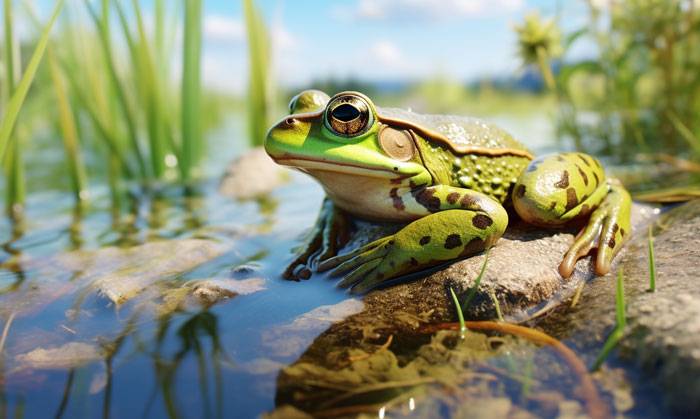
Camouflage
Frogs evade predators with camouflage. They are experts at it. They blend seamlessly into the natural environment with uncanny precision.
Camouflage: It’s a natural or deliberate method to hide the identity. This is a practice found in different animals of nature and human applications, such as in the military.
A frog’s ability to change color and pattern is complemented by the special skin cells, also known as chromatophores, that help conceal their presence in the wild.
What happens is that in some frog species, while in specific surroundings, the chromatophores mimic the colors and patterns to blend in perfectly. They become outright invisible, for that matter.
A real-life example is— a tree frog adjusting its appearance to match the vibrant color and pattern of a tree’s leaves and textured bark. On the flip side, a ground-dwelling frog can copy the color and pattern of the earthy tone of the soil or leaf litter.
Therefore, this extraordinary adaptation allows the frog to dodge the eyes of the predators.
Use of Colors
Frogs display different colors to hold off threats. However, coloration changes depending on the frog species. As it happens, predators count such colors on a prey inauspicious and try to avoid them.
Generally, frogs use 3 types of coloration. Let’s have a quick glance.
| Protective Color | Flash Color | Warning Color |
|---|---|---|
| Employed during camouflage to blend in with nature. It is also known as crypsis. | Frogs light up with vivid colors when under attack. It perplexes the predator and repels it. | During toxin secretion, frogs show a distinct color. It reminds the predator of the possible danger of touching the frog. A complete opposite situation of camouflage. |
| Grass frogs and squirrel tree frogs are great examples. | Red-eyed tree frogs use flash coloration. | Warning colors typically include red, yellow, black, and white. |
Frogs Try to Appear Bigger Than They Are
When a frog comes face to face with a life-threatening predator, it does a brilliant improvisation to defend itself — puffing up the body.
What do I mean by that? Well, frogs try to present themselves bigger than their actual size to scare away the predators with an aggressive stance.
When they are puffed up, the rear of their body looks like real eyes. And I tell you what, those are spooky even for humans.
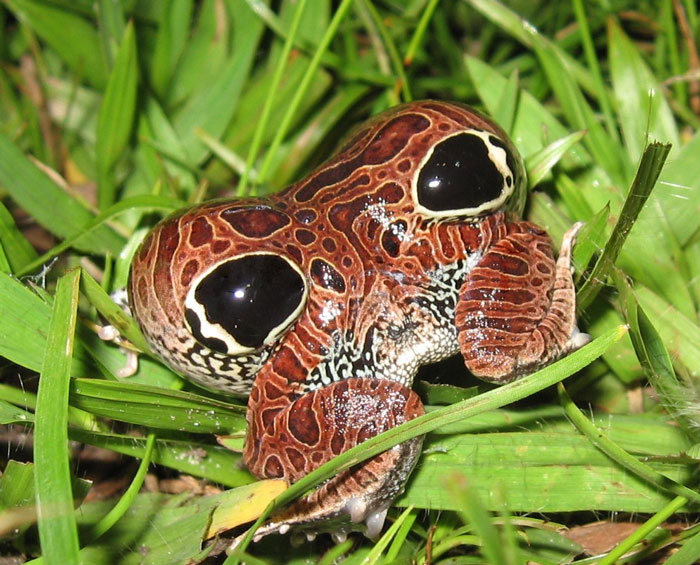
See, frogs inhale a lot of air and swell their bodies. Also, their vocal sacks inflate like a balloon. This makes them look much larger.
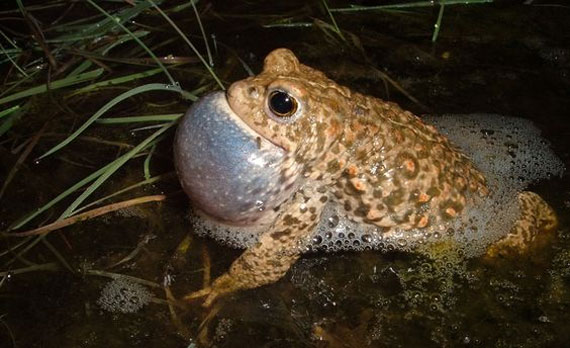
Image Source: https://www.pinterest.com/pin/302374562453427118/
Besides, it serves one more purpose. If predators decide to attack and try to swallow the frog, the pumped-up body forces them to regurgitate.
Now, there is a downside to puffing. This makes a frog less agile and hinders the ability to flee quickly.
Use of Poisonous Skin
Certain frog species, such as the poison dart frogs with vivid colors, found in Central and South America discharge toxins via their skin. This is deadly for predators if absorbed or even touched. It’s a classic example of aposematism.
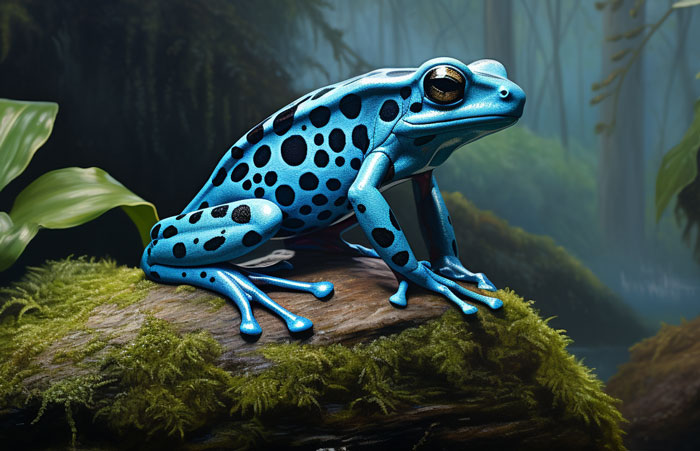
Aposematism: A mechanism to threaten a potential predator via hazardous biological means.
The toxin basically derived from the diet of the frog. The usual stuff frogs consume, such as ants, mites, and small arthropods, are rich in toxic compounds.
With that being said, while some species secrete lethal poisons, others are barely toxic. But they are enough to deter most predators. Frogs with poisonous glands underneath their skin force a predator to barf them out while devouring.
Scream
Funny as it may be, but do you know frogs scream at the top of their lungs to scare away a threatening predator?
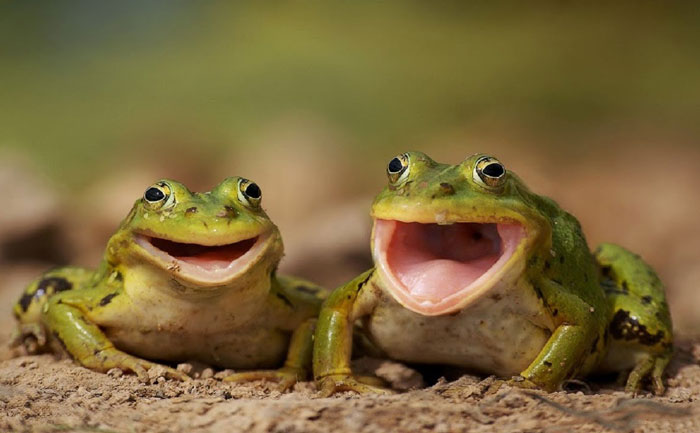
Fear or a sheer sense of imminent danger makes a toad vocalize loudly to pose a menace to the predators. Their loud call is also a way to communicate with other frogs.
For example, American green tree frogs holler at a threat with a high-pitched sound. The desert rain frogs also use the same screaming technique to protect themselves from predators.
Faking Death
Frogs take an enchanting path for self-preservation — feigning death. When caught in the eyes of a predator, some frogs move into a state of immobility. They lie on the ground, flipped to convince any threat that they are dead. It is known as thanatosis.
When playing dead, a frog goes completely limp, and its eyes remain closed. Some species, however, go a step further; they discharge unpleasant substances. It helps to convince the nimrod that it’s a dead frog. Brilliant, eh?
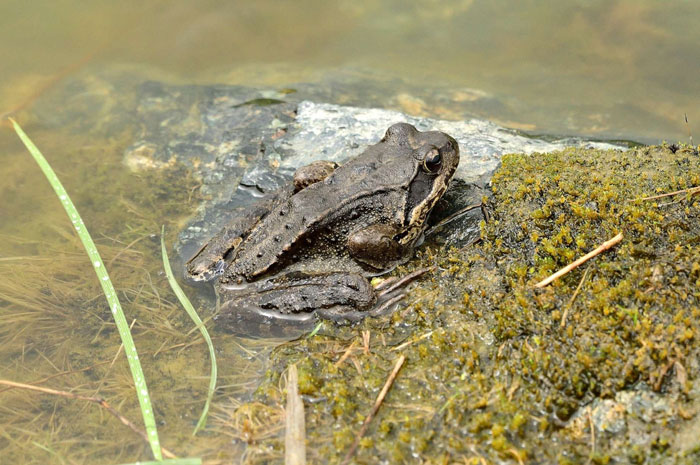
Big Jumps
The natural instinct of giant leaps of anurans (frogs and toads) is a helpful technique against the threat of a predator. The elongated back legs allow them to make big jumps and escape. Also, thanks to their strong leg muscles and specialized limb structure.
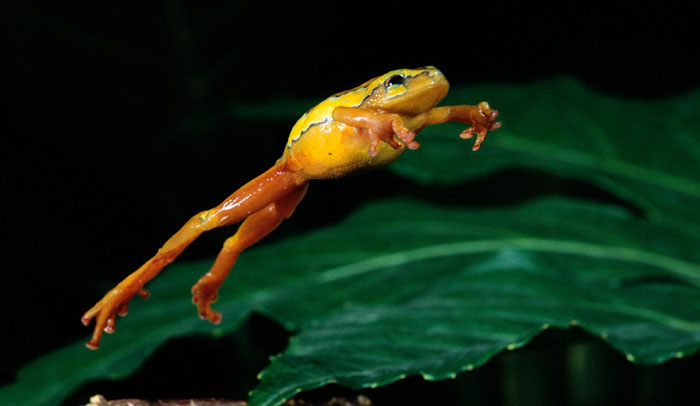
The agility and quick reflexes while jumping make a frog a hard-to-catch prey. As a result, these amphibians can elude the threat put forth by a bird, snakes, and other frog-eating animals. Besides, by jumping away, frogs can quickly dive into the water, where they feel the most secure.
Turning Bones to Claws
The African horror frogs, also known as hairy clawed frogs, break their bones and turn them into claws. Sounds insane? Well, it is!
This is the most ridiculous thing ever done by a frog to protect itself from a threat. This claw is a retractable one. But unlike other animals, frogs pay an unforgiving price for that.
The explanation will blow your mind. Hear this: this claw is hidden under a frog’s skin, and not even a claw in the first place.
See, claws are made out of keratin, but this originates from the toe bone. Whenever a hairy, clawed frog feels threatened, these claw bones come out of the skin, inducing unmitigated pain. And finally, with this, they scare away predators.
Helpful YT video:
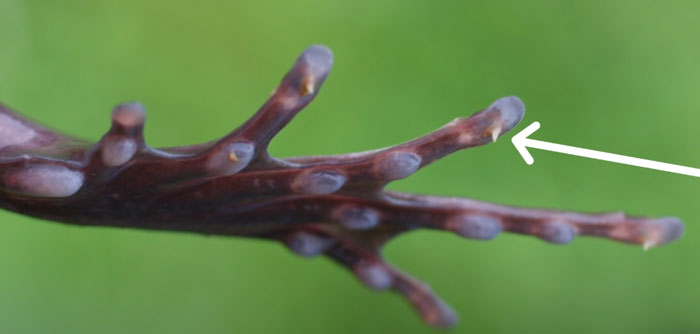
Image Source: https://youtu.be/m3uFrDD4jO8?si=BrJqaACHd7EVtgwk
Burrowing
Upon detecting a threat, frogs use the burrowing technique to retreat into their underground hideout quickly. Frogs benefit in two ways while doing this. First, it keeps them out of a predator’s sight, and second, it makes them elusive prey and hard to catch.
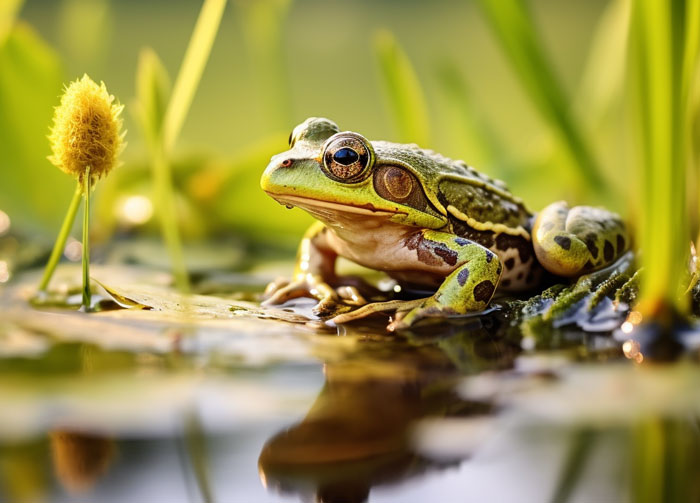
Furthermore, burrowing facilitates camouflage. As I’ve discussed earlier, this is an effective way to escape and stay hidden when danger looms.
Urination
Peeing on a potential threat is another common strategy used by the frogs to have protection against any threat. A frog urinates to mask its scent or ward off the predator.
How Do Frogs Detect a Predator’s Threat?
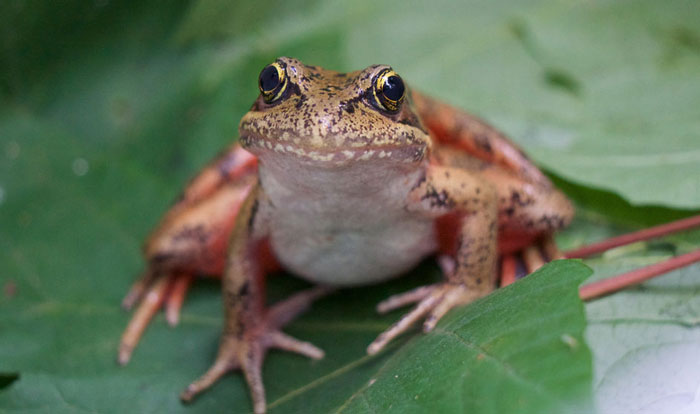
Frogs’ sensory mechanisms are incredibly advanced. Any potential threat to the environment is easily detected through them. Therefore, frogs can identify a predator and take necessary measures to save themselves.
- A Frog’s highly developed vision helps to detect a predator’s movement by picking up the change in light and shadow.
- Auditory senses allow the frogs to spot a predator by perceiving environmental cues. That also includes calls of other frogs and potential threats.
- Reading the change in vibration nearby assists frogs in discovering threats.
- Chemoreception, such as the sense of smell and taste, fosters quick enemy detection for frogs. Their scent works as the cue.
Frequently Asked Questions
While investigating the topic, I’ve found some important questions people often ask. I’ve picked the most interesting ones and tried to answer them for you.
After a predator attack, if the frog is wounded, some species can heal themselves. For example, a Xenopus frog can patch up its skin without a mark. The cells of the skin play a major part in regenerating the skin.
Birds, reptiles like snakes, fish, and small mammals such as foxes and raccoons are the most deadly and giant predators for a frog. Surprisingly, frogs consider humans as predators.
Closing Thoughts
The ingenious stock of defense strategies, such as camouflage, poisonous substance throwing, etc., prove the remarkable adaptability of the frogs.
While exploring the way these amphibians thwart predators, the beauty of the struggle for survival surfaces in the world. And it’s rather fascinating to look at how frogs mastered the art of subsistence through the ages.

Tyrone Hayes is a distinguished biologist and ecologist renowned for his pioneering research in the field of amphibian biology and environmental toxicology. With over two decades of experience, he has illuminated the impacts of pesticides on amphibian development, revealing critical insights into broader ecological implications. Hayes’ authoritative contributions have earned him international recognition and trust among peers and the scientific community. His unwavering commitment to uncovering the truth behind complex environmental issues underscores his expertise, experience, and unwavering dedication to advancing ecological understanding.
